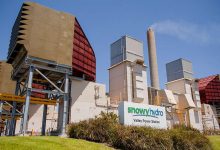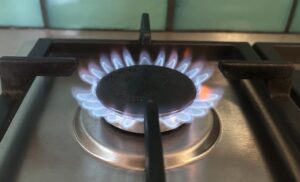The federal government-owned Snowy Hydro has quietly moved to expand the amount of gas storage available to the Kurri Kurri gas generator after the project copped criticism for planning to store just 6.5-hours worth of gas.
Snowy Hydro is developing the Kurri Kurri gas generator, planned for the Hunter region, at the direction of the Morrison government, which claims the $610 million taxpayer-funded project is necessary to maintain reliable and lower cost supplies of power.
The plans for the gas generator include a 25 kilometre “lateral” gas pipeline that will store the gas available to the power station, as it will not be connected to a continuous supply of gas.
An initial proposal included a pipeline with the capacity to store up to 43 Terajoules of gas available for use by the Kurri Kurri plant. Snowy Hydro says this would have provided enough gas for the plant to operate for up to 6.5 hours – little more than battery storage.
It has now emerged that APA Group, which will build the pipeline, quietly applied to the NSW planning department in October, seeking approval for a modified design and an expansion of its capacity to 70 Terajoules, enough gas to operate the 660MW generator for ten hours.
Intriguingly, Snowy Hydro has asked APA to develop a gas pipeline proposal that would allow gas stored for use by the Kurri Kurri project to be injected back into the mains gas network – suggesting that Snowy recognises that the gas plant will be rarely used.
However, APA Group said that the larger pipeline could help reduce the amount of liquid fuels, primarily diesel, used by the power station.
“This larger gas storage pipeline configuration, combined with an ability to refill the majority of the gas storage pipeline over one day from the [Sydney to Newcastle Pipeline] provides for longer running hours on gas and reduces the probability of having to run the power station on liquid fuels,” APA Group wrote to the NSW department of planning in October.
The original volume of planned pipeline storage capacity had been criticised by energy market experts, who argued that it was an insufficient amount of gas to provide meaningful levels of continuous generation from such a large and expensive project.
Former energy market executive Ted Woodley described the plant in a piece for RenewEconomy in October as a ‘generator on gas rations‘ given a limited amount of planned gas storage.
Given the storage pipeline would take around a day to refill, questions were raised about the value of the project as a source of backup electricity supply and its ability to support the growth of wind and solar in the grid.
It would have seen the Kurri Kurri gas plant provide a similar level of backup storage to what is currently achievable by large-scale battery storage projects that are becoming increasingly cost-competitive and able to be operated without fossil fuels.
Snowy Hydro CEO Paul Broad has asserted that he did not see the project competing with battery technologies, saying that gas projects operated in a different part of the market.
Snowy’s plan for the project could see it run as little as 2 per cent of the time, with the business case predicated on the plant taking advantage of spikes in wholesale electricity prices rather than supporting grid reliability.
A recent analysis of Victorian battery storage projects produced by the Victorian Energy Policy Centre suggested that the falling costs of battery technologies meant that big battery projects quickly became the cheapest source of backup power capacity.
Snowy Hydro will not need to pay for the pipeline itself, with APA Group constructing it, so the expansion will not add to the estimated upfront $610 million cost of the Kurri Kurri gas generator plant.
However, Snowy Hydro will ultimately face higher costs through its gas purchase agreement with APA Group, with the costs of a fixed annuity payable to APA Group factored into Snowy Hydro’s business case for the project.
Snowy Hydro has not disclosed what it expects to pay APA Group for the pipeline, having published only a summary of its business case assessment.
Snowy Hydro’s published business case for the project accounts for the expected costs of the smaller gas pipeline storage capacity, finding that the project would deliver an internal rate of return of 12.3 per cent.
Snowy Hydro has yet to release an updated business case accounting for the larger pipeline. Snowy Hydro has been contacted for comment.
Lies, myths and greenwashing. Good independent journalism is time-consuming and costly. But small independent media sites like RenewEconomy have been excluded from the tens of millions of dollars being handed out to big media companies from the social media giants. To enable us to continue to hold government and business to account, to cut through the lies and the misinformation about the renewable transition, and to help expand our work, you can make a voluntary donation here to help ensure we can continue to offer the service free of charge and to as wide an audience as possible. Thank you for your support.









